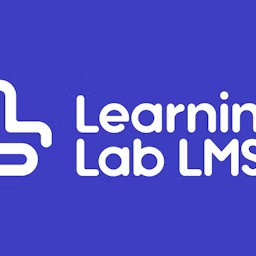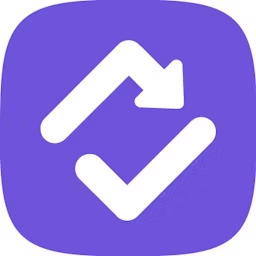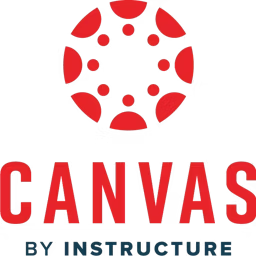Learning and development managers recognize the need to implement a centralized system that supports course creation, development, delivery, and monitoring. Unlike traditional, time-consuming training methods, learning management system (LMS) software simplifies these processes while offering the flexibility to address the diverse learning needs of corporate training, academic institutions, and professional certification courses.
An LMS solution standardizes course administration, facilitates collaborative learning, delivers multimedia-rich content, and provides actionable insights through reporting and analytics. To select the best LMS software and maximize its benefits, it’s essential to identify the key software features that align with your organization’s unique learning objectives and requirements.
This article highlights five key features of learning management system software based on the ratings given by verified software users. We’ve also included the highest-rated LMS software products for each feature.
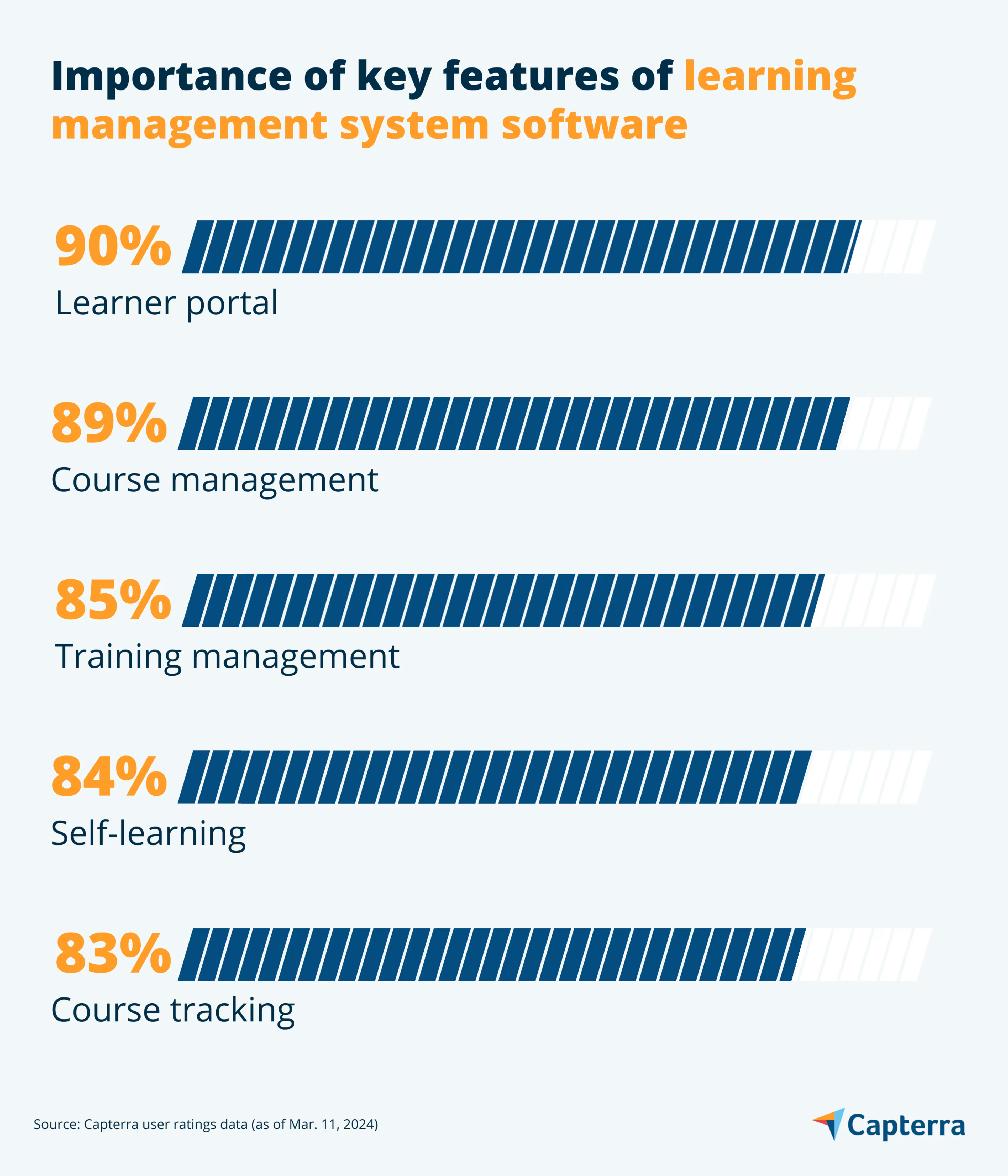
1. Learner portal
A learner portal within an LMS platform is a centralized hub for learners to access various educational materials, resources, courses, assessments, and communication tools. The key components of a learner portal include a searchable list of available courses, modules, or learning paths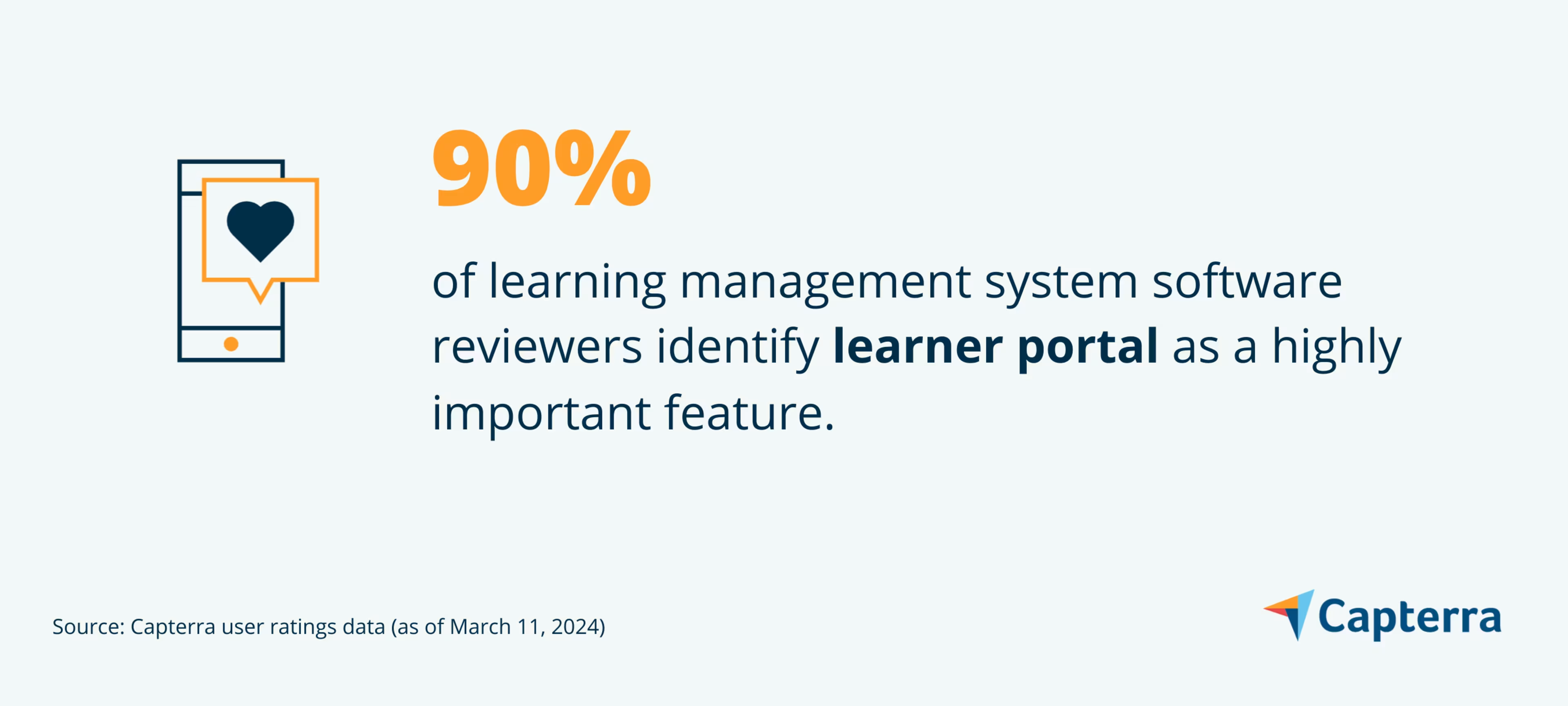
What business problem does a learner portal solve?
Businesses often need help managing and organizing training material and resources across various departments, teams, or locations. A learner portal provides a centralized platform where all learning content, courses, and resources can be stored, accessed, and managed efficiently. Moreover, a learner portal can save costs associated with traditional classroom training or distributing physical learning content.
Ideal users of the learner portal feature
Employees across organizational levels and departments can use the learner portal to access course materials and resources relevant to their roles, responsibilities, and career development goals. This includes new hires seeking onboarding training and experienced employees looking to enhance their skills or pursue professional certifications. On the other hand, managers and supervisors can leverage the learner portal to assign training courses, track the progress of team members, and monitor their development and performance.
Top 3 products with the highest ratings for learner portal
We selected products for this article based on their average ratings between March 2022 - March 2024, which may differ from their current overall average ratings.
Trial/Free Version
- Free Trial
- Free Version
Learner portal feature rating
Device compatibility
Trial/Free Version
- Free Trial
- Free Version
Learner portal feature rating
Device compatibility
Trial/Free Version
- Free Trial
- Free Version
Learner portal feature rating
Device compatibility
2. Course management
The course management feature of a learning management system provides instructors and administrators with tools to create, manage, and deliver educational training content. It lets them create new courses and define the course title, description, objective, duration, and other relevant details. They can also customize the course layout and structure according to instructional design principles and pedagogical goals.
This LMS feature helps upload various content types, such as documents, presentations, quizzes, and assessments; manage user accounts and profiles, including adding new users, updating user information, and assigning roles and permissions; and facilitate communication and collaboration among learners and instructors via discussion forums and messaging tools.
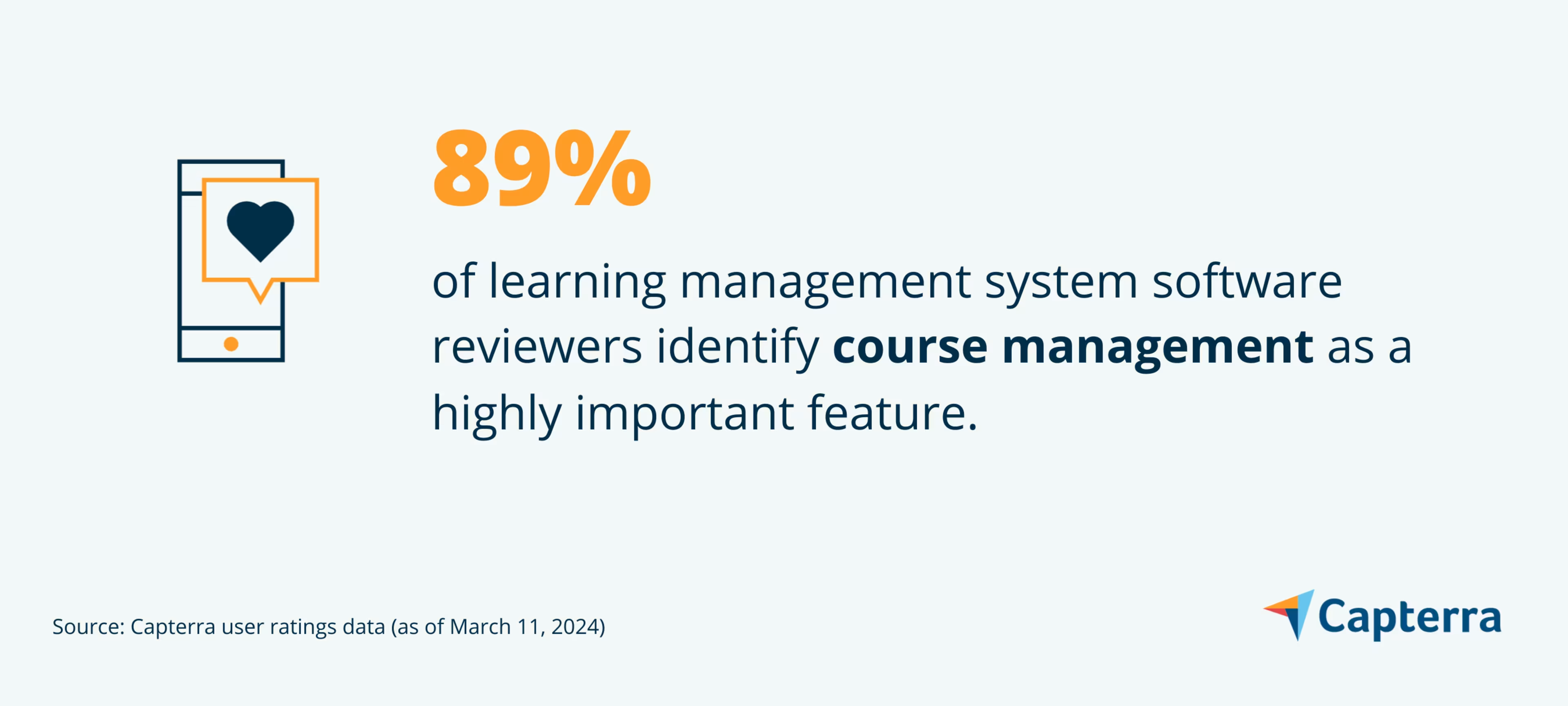
What business problem does course management solve?
Manually developing and delivering training courses is time-consuming and resource-intensive. The course management feature standardizes the process of course creation and assessment design via templates, authoring tools, and pre-built structures, saving time and effort for course creators and administrators. Course creators can even use the pre-installed content libraries and reusable modules within the LMS to expedite course development while ensuring consistency.
Ideal users of the course management feature
Learning and development managers and educators can use the feature to organize course content, create learning materials, design assessments, and align course activities with learning objectives and instructional strategies. Subject matter experts can also collaborate with course creators and instructors to review course content, provide insights, and ensure the accuracy and relevance of course materials based on industry standards and best practices.
Top 3 products with the highest ratings for course management
We selected products for this article based on their average ratings between March 2022 - March 2024, which may differ from their current overall average ratings.
Trial/Free Version
- Free Trial
- Free Version
Course management feature rating
Device compatibility
Trial/Free Version
- Free Trial
- Free Version
Course management feature rating
Device compatibility
Trial/Free Version
- Free Trial
- Free Version
Course management feature rating
Device compatibility
3. Training management
The training management feature of an LMS solution focuses on the administrative aspects of training programs, including scheduling training sessions, managing enrollments, tracking compliance with regulatory requirements, and analyzing training effectiveness through reporting and analytics tools. Administrators can use this feature to enroll individual learners or groups of learners into specific training courses or programs and manage the enrollment criteria, waitlists, and course access permissions.
This LMS feature also lets administrators monitor learner progress, track completion rates, and assess training effectiveness through reporting and analytics capabilities. It provides insights into learner engagement, participation, and achievement, allowing administrators to identify improvement areas to optimize training programs. Most training management modules typically include budgeting functionality to track training costs, manage budgets, and allocate funds to employee training initiatives based on organizational priorities and needs.
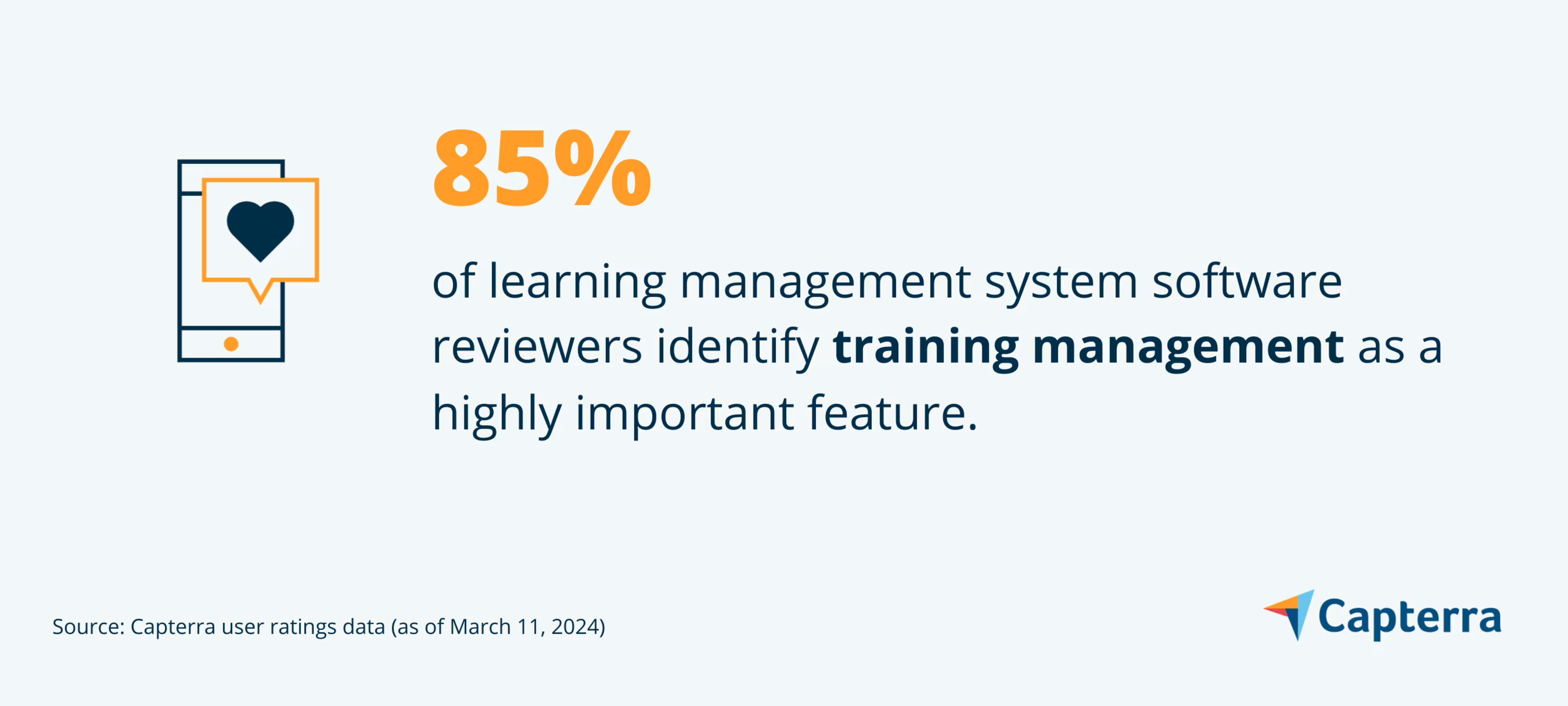
What business problem does training management solve?
Industries such as healthcare, financial services, and IT are subject to regulatory requirements or compliance standards that mandate employee training on specific topics such as safety, security, or ethics. For instance, the Health Insurance Portability and Accountability Act (HIPAA) requires healthcare organizations to ensure the security and privacy of protected health information (PHI) and mandates training for employees on HIPAA regulations, data security, and patient privacy. For these organizations, the training management feature helps track and report on training completion to ensure compliance with regulatory obligations.
Ideal users of the training management feature
Training administrators, HR professionals, and department managers can use the training management feature to oversee organizational training and development initiatives. Training administrators can leverage the feature to schedule training sessions, manage enrollments, and track learner progress. HR professionals can use it to align training programs with organizational goals and track training costs and budgets. At the same time, department managers can rely on the feature for strategic planning based on insights into training effectiveness and performance metrics.
Top 3 products with the highest ratings for training management
We selected products for this article based on their average ratings between March 2022 - March 2024, which may differ from their current overall average ratings.
Trial/Free Version
- Free Trial
- Free Version
Training management feature rating
Device compatibility
Trial/Free Version
- Free Trial
- Free Version
Training management feature rating
Device compatibility
Trial/Free Version
- Free Trial
- Free Version
Training management feature rating
Device compatibility
4. Self-learning
The self-learning feature of a learning management system allows learners to explore topics of interest and track progress through courses or modules at their own pace. Learners can access learning materials, including e-books, articles, and interactive tutorials curated by subject matter experts or instructional designers. This feature supports customizable learning paths or recommendations based on learners' interests, preferences, and skill levels, allowing them to tailor the learning experience to their individual needs and goals. Additionally, interactive quizzes, assessments, or knowledge checks within the LMS help learners assess their understanding and identify improvement areas independently.

What business problem does self-learning solve?
Traditional training programs often require employees to attend scheduled classes or workshops, which can be challenging for those with busy schedules or varying learning preferences. The self-learning feature allows employees to access learning materials and complete courses at their own pace and convenience, regardless of their location or work hours. This flexibility enhances accessibility and ensures employees can engage in learning activities without disrupting their work responsibilities, improving participation and engagement in training programs.
Ideal users of the self-learning feature
Employees and learners with varying learning needs, preferences, and skill levels can use the self-learning feature to customize their learning experience by selecting topics of interest, setting learning goals, and choosing learning materials and resources that align with their personal learning styles and preferences. This personalization approach enhances the relevance and effectiveness of training programs, leading to improved learning outcomes and skill development.
Top 3 products with the highest ratings for self-learning
We selected products for this article based on their average ratings between March 2022 - March 2024, which may differ from their current overall average ratings.
Trial/Free Version
- Free Trial
- Free Version
Self-learning feature rating
Device compatibility
Trial/Free Version
- Free Trial
- Free Version
Self-learning feature rating
Device compatibility
Trial/Free Version
- Free Trial
- Free Version
Self-learning feature rating
Device compatibility
5. Course tracking
The course tracking feature of an LMS platform helps administrators and instructors monitor and record learners’ progress and performance throughout a training course or program. It enables them to track various aspects of learner engagement, such as frequency of logins, participation in discussions, completion rates, and attendance in live sessions. These metrics provide valuable insights into the effectiveness of training initiatives. Course tracking also includes monitoring course enrollment, tracking completion status, and recording assessment scores or performance metrics. Administrators can access detailed reports and dashboards summarizing learner activity, identifying at-risk learners, and assessing course effectiveness. Additionally, learners can access their progress indicators, allowing them to track completion status, review assessment results, and monitor their performance relative to course objectives or benchmarks.
What business problem does course tracking solve?
Effective tracking of employee progress and performance in training programs supports employee development and career advancement opportunities. By identifying skill gaps and learning needs, organizations can tailor training programs to address individual employee development goals and support career progression. This personalized approach to employee development enhances job satisfaction, engagement, and retention, as employees feel supported in their professional growth and advancement within the organization.
Ideal users of the course tracking feature
Training administrators can use the course tracking feature to oversee learners’ progress, monitor engagement, and ensure the effective delivery of training programs. At the same time, instructors can rely on course tracking to assess learner performance, provide feedback, and adjust course content or delivery methods based on learners’ needs. Similarly, HR professionals can use the feature to assess the effectiveness of training programs, identify trends in employee learning and development, and make informed decisions regarding training investments and resource allocation.
Top 3 products with the highest ratings for course tracking
We selected products for this article based on their average ratings between March 2022 - March 2024, which may differ from their current overall average ratings.
Trial/Free Version
- Free Trial
- Free Version
Course tracking feature rating
Device compatibility
Trial/Free Version
- Free Trial
- Free Version
Course tracking feature rating
Device compatibility
Trial/Free Version
- Free Trial
- Free Version


